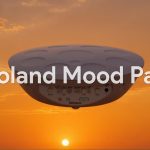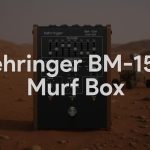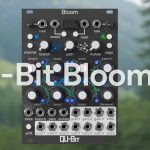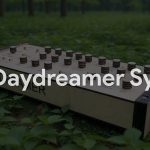The Workstation That Refuses to Pick a Single Identity
Most sampling workstations evolve incrementally—more voices, more effects, larger screens—while preserving the workflows that made their predecessors iconic. But Elektron’s Tonverk represents something fundamentally different: a complete philosophical reimagining of what a performance sampler can be when polyphony, multisampling, and elaborate routing converge in a single instrument.
This isn’t an Octatrack successor or Digitakt evolution; it’s Elektron’s declaration that sampling in 2025 demands instruments that think like workstations, route like mixers, and modulate like modular systems. At €1,399/$1,599, the Tonverk positions itself as Elektron’s new flagship—a 16-track ecosystem where every element can be instrument, effect, or routing destination.
Sixteen Tracks, Four Identities: The Architecture of Flexibility
The Tonverk’s genius lies in its track organization, which transforms the traditional sampler paradigm into something approaching a complete studio environment. Eight stereo audio tracks form the core, while four bus tracks, three send tracks, and one mix track create a comprehensive routing and processing ecosystem.
Each audio track can assume one of four distinct machine personalities, creating hybrid configurations impossible with conventional samplers:
Single Player: Polyphonic playback of individual WAV files with adjustable loop points and crossfade parameters for seamless looping. This is familiar territory expanded with true polyphony and stereo capability.
Multi Player: Loads multisampled instruments with velocity layers and multiple samples per note, transforming the Tonverk into a performance instrument capable of realistic instrumental expression.
Subtracks: The most radical innovation—each track becomes eight monophonic sample players, each with its own filters, amp envelope, and modulation. Essentially, it’s eight drum machines hidden inside a single track.
MIDI: Convert any track into a MIDI sequencer with 16-voice polyphony per step and 16 assignable CC controllers, making the Tonverk a command center for external hardware.
Auto Sampler: The Robot Assistant for Multisampling
While multisampling typically requires tedious manual organization, Tonverk’s Auto Sampler creates multisampled instruments automatically by connecting MIDI and audio to external instruments, then sampling each note at each velocity level while organizing the results in the background.
You specify sample duration, velocity levels, pitch range, and semitone spacing, then the Tonverk systematically samples your connected instrument. This transforms what was once a technical exercise into a creative workflow, making multisampling accessible to producers who think in sounds rather than file management.
The Auto Sampler works with any MIDI-capable instrument and even supports USB connections, meaning software instruments can be captured with the same ease as hardware synthesizers.
Effects Architecture: Seventeen Flavors of Sonic Transformation
Tonverk features 17 effects modules across its various track types, many developed specifically for this instrument. The new processors include intriguingly named tools like Infinite Flanger, Phase 98, Dirtshaper, Chrono Pitch, and Supervoid Reverb—effects that suggest Elektron’s continued commitment to characterful, musical processing.
Each track has two per-voice LFOs, a modulation envelope, and two FX-specific LFOs for automating insert effects, creating modulation possibilities that rival dedicated synthesizers. The routing flexibility means effects can be applied per-track, via sends, or through the comprehensive bus system.
Polyphonic Sequencing: 256 Steps of Multidimensional Control
The polyphonic sequencer provides up to 256 steps per pattern and track, with individual pattern lengths, parameter locks, trig conditions, retrig, microtiming, and per-track arpeggiators. This represents a significant evolution from traditional Elektron sequencing, accommodating both the complex polyrhythms the company is known for and the sustained harmonic sequences that polyphonic instruments demand.
Parameter locks can even be applied to routing itself, creating evolving signal flows that change throughout a sequence. This transforms static patches into dynamic, evolving compositions where the routing becomes part of the musical content.
Technical Specifications: Professional Connectivity in Compact Form
Core Architecture:
- 5GB internal sampling memory with 64GB SD card included
- 128 x 64 pixel OLED display
- Dimensions: 286 × 176 × 63 mm, weight: 1.85 kg
Connectivity:
- Four balanced jack outputs, two balanced jack inputs
- MIDI in/out/through ports with DIN sync
- Two USB-C ports with class-compliant USB audio support
- SD card slot for expandable storage
The dual USB-C ports are particularly forward-thinking, providing both computer connectivity and the potential for expanded I/O or control surface integration.
What’s Missing: The Octatrack Inheritance Question
Despite appearances, Tonverk lacks some popular Octatrack features such as its crossfader and appears to emphasize studio functionality over live performance. Features like granular synthesis, live looping, and time-stretching aren’t available, making it 100% sample-based rather than a sample manipulation powerhouse.
This represents a conscious design choice—rather than iterating on the Octatrack’s performance-focused architecture, Elektron has created a different kind of instrument optimized for composition, multisampling, and complex routing rather than real-time sample manipulation.
Creative Applications: Beyond Traditional Sampling
The Tonverk’s architecture encourages applications that transcend traditional sampling:
Hybrid Orchestration: Use Multi Player tracks for realistic instruments while Subtracks provide percussion and Single Player tracks handle textural elements.
External Integration: MIDI tracks sequence hardware while audio tracks process the results through the comprehensive effects and routing system.
Evolutionary Compositions: Parameter-locked routing changes create compositions that morph structurally as they progress, not just sonically.
Multisampling Laboratory: The Auto Sampler transforms any MIDI instrument into a polyphonic, velocity-sensitive Tonverk voice.
The Elektron Evolution: Platform vs. Product
Elektron describes Tonverk as “the first device and certainly not the last” in a new platform family, suggesting this architecture will expand across future products. This platform approach mirrors the modular synthesis philosophy—creating foundational technologies that can be recombined and expanded rather than isolated products.
This strategic thinking positions the Tonverk not as a final destination but as the foundation for an ecosystem of sampling and processing tools that share common workflows and technologies.
Value Proposition: Workstation Capability at Sampler Price
At €1,399/$1,599, the Tonverk competes with high-end samplers while delivering workstation-level functionality. It’s currently listed as ‘out of stock’ at Elektron’s site, but retailers are beginning to list it for pre-order, suggesting strong initial demand.
Consider the cost of combining a polyphonic sampler, multitrack sequencer, effects processor, and routing matrix, and the Tonverk’s integrated approach becomes compelling beyond convenience—it creates workflow possibilities that separate components can’t match.
The Sampling Future According to Elektron
The Tonverk represents Elektron’s vision of where sampling is headed—toward instruments that accommodate the complexity of modern production while maintaining the immediacy that makes hardware appealing. By treating routing as a creative medium, polyphony as a fundamental requirement, and multisampling as an accessible tool, it expands sampling from playback technology into compositional environment.
Whether you’re building complex arrangements, processing external instruments, or exploring the boundaries between sampling and synthesis, the Tonverk provides a platform that grows with creative ambition rather than constraining it.
Ready to rethink everything you knew about sampling? The Elektron Tonverk proves that the most revolutionary instruments are those that don’t just do more—they do differently, transforming familiar concepts into unexplored creative territories.
About Me
Hi, I’m Canoy Dang. I grew up in Granada and now living in Málaga, in the south of Spain. Sound has always played a central role in my life — from early home recordings to the deeper, ongoing exploration of the modular synth world. Modular, semi-modular, and desktop synthesizers have become my main tools for expression, experimentation, and sometimes, simply for getting lost in the process.






